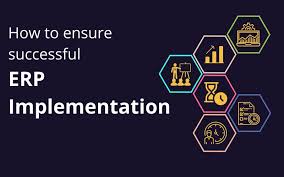Implementing an ERP (Enterprise Resource Planning) system in schools involves several key best practices to ensure a smooth and successful transition. First, define clear objectives by identifying specific goals such as enhancing administrative efficiency or improving data management. These goals guide the implementation and help measure success.
Engage stakeholders early in the process, including administrators, teachers, and IT staff, to gather input and address concerns. Their involvement ensures the system meets all user needs and fosters support.
Choose the right ERP system that aligns with the school’s requirements. Evaluate options based on features, scalability, and integration capabilities.
Develop a detailed implementation plan that includes timelines, resource allocation, and responsibilities. This plan should cover system configuration, data migration, and training.
Ensure data accuracy before migration to maintain reliable reporting and decision-making. Provide comprehensive training for users to ensure they are comfortable with the new system and offer ongoing support.
Conduct thorough testing to identify and resolve issues before going live. Monitor system performance post-implementation and gather feedback for continuous improvement. Plan for regular maintenance to keep the system up-to-date and secure.
By following these practices, schools can effectively implement ERP systems and achieve operational efficiency and enhanced data management.
